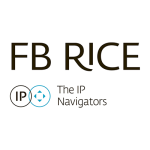We wrote about the proposed changes to The Designs Act 2003 last year in our article. Those changes are soon to come into effect, as the Designs Amendment (Advisory Council on Intellectual Property Response) Act 2021 (the Act) received royal assent on September 10 2021.
Grace period for registered designs
Perhaps, the most significant change is the introduction of a one-year grace period for registering designs. That one-year grace period will protect designers (whether based in Australia or overseas) who, through inadvertence or ignorance, publish their design before seeking protection. The grace period also covers the situation where a designer publishes a design and subsequently files for a slight variation or improvement of the published design.
The grace period commences March 10 2022. Only publications that take place on or after that date are covered by the grace period provisions. Any publications occurring before that date will not be covered by the grace period.
Importantly, the grace period runs from the priority date of an application to register a design. For example, applicants who make an initial public disclosure of a design, then file in the US within one year from the initial publication, will be able to validly file in Australia claiming priority from their US design application. They could also file directly in Australia, without a priority claim, provided they file within the one-year grace period and do not fall foul of two notable exclusions discussed below.
Exclusion one: Publications of the design by national or international designs offices
Designs published by national or international designs offices are not eligible for the grace period. Applicants who first file overseas should therefore always look to rely on the Paris Convention when filing in Australia, rather than on the grace period.
Exclusion two: Publications by the registrar
Also excluded are publications of earlier Australian registered design applications filed by the designer or their successor(s) in title. This is intended to prevent designers from using the grace period to extend the term of the design by filing an application for a design, and within the one-year grace period filing a second design application for the same design or an immaterial variant of it.
Prior user rights following the introduction of a grace period
The introduction of the grace period is necessarily accompanied by the introduction of prior user rights to protect a third party who begins using a design after there has been a disclosure of the design but before an application for registration has been filed.
The continuing user rights are in the form of an infringement exemption and any single act done before the application for registration has been filed (‘triggering prior use’) that would have been an infringement of the subsequent registration provides the third party with an ongoing right to infringe the design registration. For example, if the triggering prior use was the importation of a product before the application was filed, the prior user rights would extend to any act set out in Section 71(1) including making, selling, hiring, using, and keeping a product embodying the design.
The prior use rights cover slight variations of the design including designs that are substantially similar in overall impression to the registered design. Hence it would appear that once a third party has acquired prior user rights, they will be able to make slight variations to their original design which gave rise to the triggering prior use without infringing the subsequently filed registration.
The prior user rights commence in tandem with the grace period on March 10 2022.
Publication/registration
From March 10 2022, the option of mere publication of a design rather than registration is removed, as is the requirement to request registration within six months of the priority date of a design application. Changes to the timetable for publication are also introduced, whereby, if a design application is filed without a request for registration, publication will be deferred for six months.
Right of an exclusive licensee to sue
The Act introduces the right of an exclusive licensee to sue, similar to the right that is provided to an exclusive licensee of a patent under the Patents Act 1990. Currently, only the registered owner of a registered design can commence infringement proceedings for infringement of the registered design.
This right commences from March 10 2022.
Extension of ‘innocent infringer’ defence
From March 10 2022, the innocent infringer defence, which protects third parties who unknowingly infringe a registered design, is extended to cover the period between the filing date of a design application and the date of registration, as during this period, the design is not publicly available on the Register of Designs.
Clarification of the ‘standard of the informed user’
The ‘standard of the informed user’ has been amended to make it clear that the standard to be applied when a person (such as an examiner or court) compares two designs to assess whether or not they are substantially similar in overall impression is no higher than familiarity with the relevant product and that the informed user does not have to be an actual user of the product.
This amendment came into force on September 11 2021.
Revocation where certification was obtained by fraud
The ground of revocation on the basis of fraud, false suggestion, or misrepresentation leading to registration of the design contained in Subsection 93(3) of The Designs Act 2003 is extended to relevant acts committed during examination and certification of a design, and not just at registration.
Amendments are also introduced to make it clear that the current provisions for revocation due to lack of entitlement under Subsection 93(3) require the court to consider the circumstances and be satisfied that it is just and equitable to revoke before doing so.
This amendment also came into force on September 11 2021.
Renewal of design registration during the extension period
Although the due date for renewing a registered design is five years from the filing date, there is a six-month extension period during which the renewal fee may be paid with extension fees. The Act now makes it clear that the design does not cease in the period between the due date and the date the renewal fees are paid and renewal occurs.
This amendment also came into force on September 11 2021.
What is next for registered designs in Australia?
As outlined above, there are plenty of changes that could be made to improve designs protection in Australia, that have been previously proposed, and which are not included in the Act. Other articles in our Registered Designs Series explore further reforms that many designers, particularly users of the current designs system, wish to see implemented in the course of IP Australia’s ongoing Designs Review project. Additionally, general information on registered designs in Australia is provided.
Jeremy Dobbin
Partner, FB Rice












